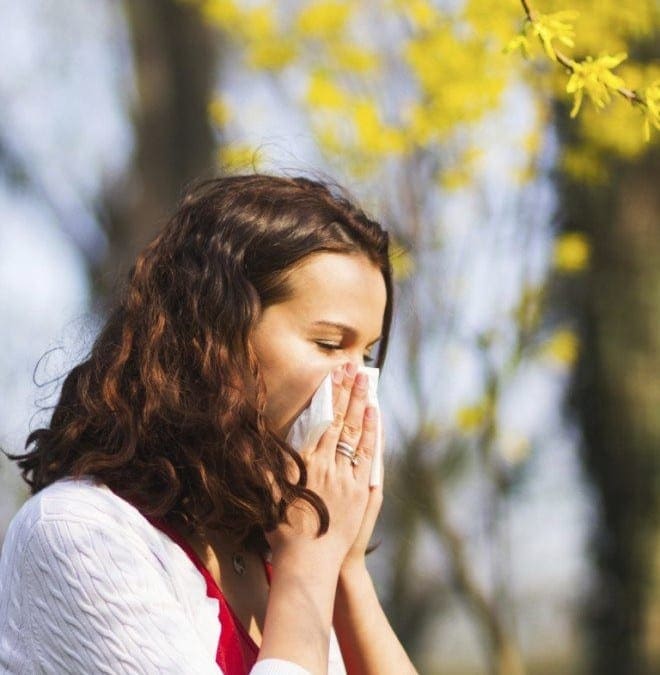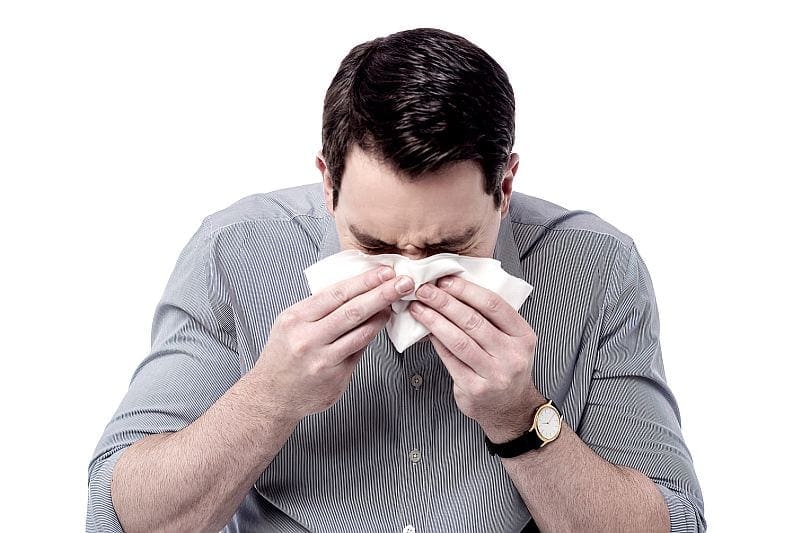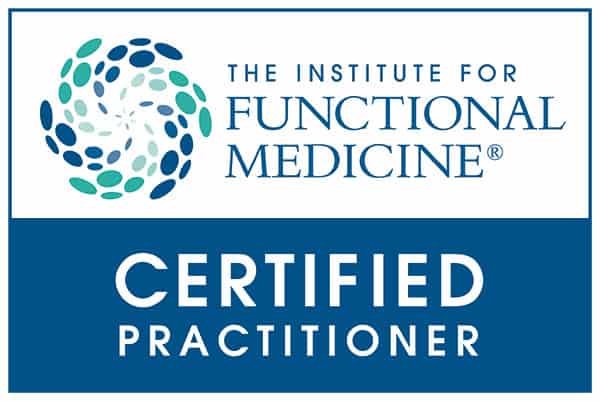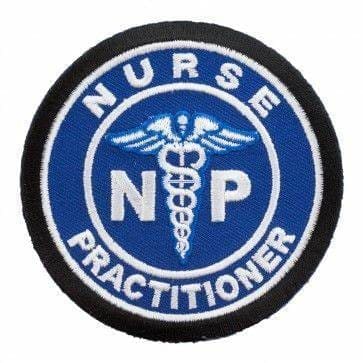
by Dr Alex Jimenez DC, APRN, FNP-BC, CFMP, IFMCP | Natural Health
The World Health Organization estimates that 50 percent of the population will suffer from at least one allergy by 2050. Relaxnews spoke with Christine Rolland, director of the French association Asthme & Allergies, to help sort fact from fiction when it comes to allergies.
More people suffer from allergies in spring than in winter.
FALSE. People suffer from allergies all year long. You can be allergic to dust mites, animal hair, mold, foods or drugs, or have allergic asthma or skin reactions.
More people have allergies in the countryside than in urban areas.
FALSE. Allergies are more common in urban settings, notably due to a convergence of factors. One of those factors is air pollution, which also aggravates pollen allergies.
Allergies are increasingly common due to environmental factors.
TRUE. One theory suggests that reduced biodiversity in our environment could cause changes to the body’s intestinal and respiratory flora. This could, in turn, reduce tolerance, which ultimately defines an allergy. But there are other factors at play in the development of allergies, such as cigarette smoke (active and passive smoking), other types of indoor and outdoor atmospheric pollution, and changing dietary factors.
A skin-prick test can identify what you’re allergic to.
TRUE. Together with detailed questions about when allergic symptoms arise, skin-prick tests and, if necessary, an “allergen-specific IgE” blood test can help identify the allergen or allergens responsible. These tests can be carried out from an early age.
Indoor air is less polluted than outdoor air.
FALSE. The indoor environment is five to 10 times more polluted than outdoors. In enclosed spaces, several allergens can provoke allergic reactions (dust mites, animal hair, mold, etc.). These are accompanied by the “domestic pollutants” used every day in indoor spaces (smoking, cleaning products, air fresheners etc.). These pollutants can make the occupants of the space more vulnerable and increase the risk of developing allergy symptoms.
Older people can’t develop allergies.
FALSE. Contrary to popular belief, allergies can also develop in older people, at age 60 or even older. Unfortunately, their symptoms are often attributed to causes other than allergies, delaying treatment and the effective management of symptoms.
Allergies don’t have serious consequences if left untreated.
FALSE. What can seem like “regular” allergic rhinitis, for example (sneezing, stuffy nose, runny nose, itchy or stinging eyes), can develop into potentially serious bronchial breathing problems. In 30% of cases, untreated allergic rhinitis develops into asthma.
Antihistamine treatments allow allergy sufferes to lead normal lives.
TRUE AND FALSE. Treatment with antihistamines can bring effective relief from allergy symptoms, but this isn’t always sufficient. Depending on the type and severity of the allergy, allergen immunotherapy (desensitization) may be necessary.
by Dr Alex Jimenez DC, APRN, FNP-BC, CFMP, IFMCP | Natural Health
Do you have a cruise planned or are you thinking of booking one? They’re a great, relaxing, don’t-worry-about-a-thing type of vacation that millions of Americans love. And with about 30 embarkation points across the nation, chances are one is within easy reach. At most, a cruise port is probably only a short flight away.
Generally, a cruise is a very safe vacation and free from illness, but there are steps you can take to lessen the odds that you will be struck down by a stray bug or have an accident.
First, try to wind down a couple of days before your cruise. “Leisure sickness” occurs when the transition from the stress of work to relaxation is fast — as in leaving work one day and boarding a plane the next. If you were scurrying around finishing projects, the stress hormones that helped you meet your deadlines and also fight off illnesses, suddenly fade away as another hormone, cortisol, steps in to ease the stress. Unfortunately, cortisol lowers your immunity as it calms, and suddenly you come down with a terrible cold or a migraine headache.
Cruise personnel work hard to keep ships sparkling clean, but they can’t control everything. Although each passenger is asked health questions, such as “Do you have a fever?” it’s easy for someone with a virus to board — some aren’t even aware they’re sick.
Cruise ships by their nature include large groups of people in confined spaces, providing ideal conditions for flu, colds, and gastrointestinal illnesses to spread.
The norovirus has a particularly nasty reputation among cruisers. Every year, it sickens up to 21 million people, according to the Centers for Disease Control, but the fact is that fewer than 1 percent of cases occur on cruise ships. However, if a sick person boards a ship, the virus can quickly spread. Your best defense against norovirus as well as the common cold is to avoid touching spots that might harbor the virus, like elevator buttons and ship rails, and wash your hands frequently.
Even though your cabin may appear spotless, bring hand sanitizer or antibacterial wipes to clean the TV remote control, light switches, and door knobs as soon as you enter — all have been shown to harbor bacteria, just like in hotel rooms.
Motion sickness isn’t the problem that it used to be due to stabilizers on modern ships and the ability to navigate around storms. But if you tend to have motion sickness, you might ask your doctor to prescribe Transderm Scop, a transparent scopolamine patch applied behind the ear which is effective for up to three days. Over-the-counter solutions include Dramamine and Bonine.
Ginger quells queasy stomachs for many people, and some cruisers use a Sea-Band wristband, which applies acupuncture to sensitive points to ease queasiness.
Trips and falls are more common on ships than on land. Decks may be slippery from water, raised doorsills are common, and going down stairs while the ship is in motion can result in a nasty fall. Watch where you step, and use a handrail when taking the stairs.
While your ship may be clean, the ports of call can be dicey. Traveler’s diarrhea (TD) is the single most common illness contracted by people on vacation, and it can be caused by food contaminated with e. coli bacteria or noroviruses. It can also be caused by contaminated water, including ice. While in port, avoid drinks with ice and any uncooked fruits or vegetables. Wash your hands frequently, and carry a mini-bottle of hand sanitizer with you.
Carry sun tan lotion to avoid sunburn and bug spray to protect you from disease-carrying insects, including mosquitoes that carry the Zika virus.
Back on board, you might want to skip the hot tub. Several passengers in recent years have sued cruise lines for being negligent and allowing dangerous bacteria in their hot tubs. Lawsuits have claimed hot tubs tested positive for methicillian-resistant staphylococcus aureus (MRSA) and Legionella bacteria. Hot tubs, in general, are often found to contain coliform and enterococcus — fecal bacteria. Just say no.
While lavish all-you-can-eat buffets are tempting, don’t overindulge — at least not too much. Consumer Reports says that given the rich food and amount of alcohol available on cruises, they put passengers in the same category of high risk for sudden cardiac deaths as major holidays like Thanksgiving and Christmas. Your cruise director won’t want to admit it, but most ships have a morgue.
It’s easier to limit food portions if you stick to eating in the dining room. In addition, you also avoid the risk of picking up germs from serving utensils used by dozens of other cruisers at the buffet.
Also, the sea air might not be as pure as you would expect. A German study found that the pollutants coming from a ship’s exhaust could mean that passengers inhale up to 60 times higher concentrations of pollutants than they would in natural settings. Lessen your risk by not staying on deck for long periods, and if you’re really concerned — or have asthma or other lung problems — you might consider packing a portable air purifier to use in your cabin.

by Dr Alex Jimenez DC, APRN, FNP-BC, CFMP, IFMCP | Natural Health
More older American women than ever are drinking — and drinking hard, a new study shows.
Most troubling was the finding that the prevalence of binge drinking among older women is increasing dramatically, far faster than it is among older men, the researchers noted.
The difference was striking: Among men, the average prevalence of binge drinking remained stable from 1997 to 2014, while it increased an average of nearly 4 percent per year among women, the researchers found.
Increased drinking and binge drinking can be a serious health problem for women, said study author Rosalind Breslow, an epidemiologist at the U.S. National Institute on Alcohol Abuse and Alcoholism.
Women don’t tolerate alcohol as well as men, and they start to have alcohol-related problems at lower drinking levels than men, Breslow explained.
She pointed out that on average, women weigh less than men, and have less water in their bodies than men do. (Alcohol dissolves in water).
“So, after a man and woman of the same weight drink the same amount of alcohol, the woman’s blood alcohol concentration will tend to be higher, putting her at greater risk for harm,” Breslow said.
For the study, Breslow and her colleagues collected data on more than 65,000 men and women aged 60 and older who were current drinkers. Among these, more than 6,500 men and 1,700 women were binge drinkers.
Older adults, in general, are at greater risk of the effects of alcohol than younger adults, Breslow noted. “They’re more sensitive to the effects of alcohol, which can contribute to falls and other injuries, a major problem in older people,” she said.
As the U.S. population ages, the number of men and women 60 and older who drink will likely increase further, bringing with it more alcohol-related problems.
In the study, said Breslow, “we found that between 1997 and 2014, the proportion of older male drinkers in the U.S. population increased about 1 percent per year, and female drinkers increased nearly 2 percent per year.”
It’s not clear why this is happening, Breslow added.
“There is a great deal of speculation that baby boomers drank more when they were young and continue to drink more as a group. There is some limited evidence to support this speculation,” she said.
“We did find that more younger boomers, ages 60 to 64, both men and women, were drinking than people of the same age in past generations,” Breslow added.
Whether drinking is increasing among certain racial or ethnic groups isn’t something the researchers analyzed, she said.
But alcohol can have devastating consequences, particularly for older adults, Breslow said.
“Too much drinking increases your chances of being injured or even killed. Alcohol is a factor, for example, in about 60 percent of fatal burn injuries, drownings and homicides; 50 percent of severe trauma injuries and sexual assaults; and 40 percent of fatal motor vehicle crashes, suicides and fatal falls,” she said.
In addition, heavy drinkers have a greater risk of liver disease, heart disease, sleep disorders, depression, stroke, bleeding from the stomach, sexually transmitted infections from unsafe sex, and several types of cancer, Breslow said. They may also have problems managing diabetes, high blood pressure and other chronic conditions.
“Think before you drink,” she said. Adults over age 65 who are healthy and do not take medications should not have more than three drinks a day or seven drinks in a week, Breslow said.
“Based on your health and how alcohol affects you, you may need to drink less or not at all,” she added.
Another alcohol abuse expert also felt that the rise in binge drinking among older women was the most concerning finding in the study.
“We know that, overall, women are more sensitive to the negative health consequences of alcohol than men,” said Dr. J.C. Garbutt, medical director of the University of North Carolina Alcohol and Substance Abuse Program, in Chapel Hill.
“These consequences include liver disease, high blood pressure, stroke, heart disease and cognitive impairment — serious problems — and addiction to alcohol is possible as well,” he said.
Garbutt said he couldn’t explain the increase in binge drinking among older women.
“One would have to think there are major cultural factors at work, including the greater acceptability for women to drink, family structural changes, and perhaps greater access. But we really don’t know so it would be premature to speculate,” he said.
“Regardless, this speaks to the need to continue to educate the public about the harms of alcohol, including the increased risk to women and older individuals,” he said.
The report was published March 24 in the journal Alcoholism: Clinical and Experimental Research.
A study published last October also found the gap in drinking between men and women is closing.
Women across the globe are now nearly as likely as men to drink and to engage in excessive drinking, according to researchers with the National Drug and Alcohol Research Center at the University of New South Wales in Australia.
by Dr Alex Jimenez DC, APRN, FNP-BC, CFMP, IFMCP | Natural Health
Sometimes there is real danger in getting too much bang for your buck. That’s the case with B vitamins, says ConsumerLab.com, after the organization tested popular vitamins and found that many contained potentially toxic amounts of the vitamin as well as misleading labels.
The Food and Drug Administration recently warned that the daily values assigned to most B vitamins are too high and may be dangerous to your health. But although the FDA reduced the values, manufacturers don’t have to change their label to reflect the new guidelines until at least 2018.
CL, a consumer information provider, tested 49 supplements from the U.S. and Canada containing B Complexes as well as the eight individual B vitamins: thiamine (B-1), riboflavin (B-2), niacin (B3), pantothenic acid (B-5), pyroxidine (B-6), biotin (B-7), folate (folic acid, B-9) and cobalamin (B-12).
“We found that nearly all B vitamins currently have misleading information with respect to the percentage of Daily Values they provide,” says Dr. Tod Cooperman, ConsumerLab.com’s president and founder. “You are often getting more than you think, need or should want.
“Like most vitamins, B vitamins are essential,” Cooperman tells Newsmax Health. “There are eight different B vitamins and since your body can’t make them you must get them from your diet or from supplements. But while they can be beneficial in the right dose, too much can cause toxicity.”
B vitamins play crucial roles in our bodies. For example certain B vitamins have been found to be beneficial in reducing the risk of strokes and others may slow the decline in memory, cognition, and even Alzheimer’s disease, says Cooperman.
Deficiency in B-3 — also known as niacin — B-6, and B-12 can cause depression. Low levels of B-12 have been associated with increased risk of canker sores.
Sometimes people can’t get enough B vitamins from their diet and that’s where supplementation can be helpful. Older people who may be taking medicine to lower stomach acid, pregnant women and individuals with certain genetic mutations can fall into this category.
But taking these vitamins can be a double edged sword if the labels do not correctly reflect the accurate dosage contained in each tablet or the tablet contains what CL calls the UL or “upper limit” of vitamin value.
Folate, for example, is important in reducing birth defects of the spinal cord and is therefore a critical ingredient in prenatal vitamins. But at a high dosage, it may increase the risk for certain cancers.
Niacin, when taken at very high doses, can improve cholesterol levels but can also cause side effects such as skin flushing and liver toxicity.
“Too much B-6 can cause heartburn, nausea and photosensitivity,” notes Cooperman. “At very high levels it can also cause nerve damage and skin lesions.
“You need to be most careful with three of the B vitamins and those are niacin, B-6 and folate. These, in inappropriate doses, can be the most dangerous. Most people, especially vegans or vegetarians, get too little of vitamin B-12 from their diet, but fortunately it is the safest one to take. If that’s all you need, simply take B-12 supplements and skip the rest until the manufacturing labels on other forms of B vitamins adhere to the new FDA standards of Daily Values.”
CL did find that your best bet for getting the correct Daily Value in an all inclusive B-Complex vitamin was also the least expensive. Their top pick was Kirkland Signature (Costco) B-Complex which provides a least 100 percent of the Daily Value without exceeding the UL or upper limit values for a mere 2 cents a tablet.
For more specific information on which brands were tested, failed, or approved, visit www.ConsumerLab.com.
by Dr Alex Jimenez DC, APRN, FNP-BC, CFMP, IFMCP | Herbs, Natural Health
The herb ashwagandha, which has been used for centuries in Indian folk medicine to promote sound sleep has been proven effective by Japanese researchers.
Ashwagandha (Withania somnifera) is a central herb in Ayurveda, the traditional home medicine native to India. Its Latin name — somnifera — means sleep-inducing.
Researchers at the University of Tsukumba studied the effects of various components of ashwagandha on mice by using a neurological test (EEG) to record activity in the brain.
A water extract of ashwagandha leaf, which was rich in the component triethylene glycol (TEG), significantly increased non-rapid eye movement (NREM) sleep. It also slightly changed rapid eye movement (REM) sleep.
An alcoholic extract containing active withanolides, which are other active compounds in ashwagandha, showed no effect on sleep.
The sleep induced by TEG was similar to normal sleep. Furthermore, commercially available TEG also increased the amount of NREM sleep.
The researchers concluded that TEG is the active component that induces sound sleep, and that TEG can improve sleep without side effects. They believe their findings could revolutionize the natural plant-based therapies for insomnia and sleep-related disorders.
According to the Centers for Disease Control and Prevention, up to 70 million American adults have difficulty sleeping. Sleeping disorders increase with aging, and affect almost half of adults 60 and older.
Ashwagandha is available in capsules in health food stores.
by Dr Alex Jimenez DC, APRN, FNP-BC, CFMP, IFMCP | Natural Health
Using hair to measure long-term levels of the stress hormone cortisol, UK researchers confirm the link between chronic stress and packing on pounds, as well as difficulty shedding excess weight.
Previous research has tied high levels of the stress hormone cortisol in the blood, urine or saliva to obesity, but these measurements can vary based on factors like the time of day and don’t capture long-term stress levels, the study team notes in the journal Obesity.
“When people are facing a stressful situation, a chain reaction is set off in the body that results in the release of cortisol, leading to higher levels of this hormone in the body,” said lead study author Sarah Jackson of University College London.
“Cortisol is involved in a broad range of biological processes, including metabolism, body composition and the accumulation of body fat,” Jackson said by email. “When we’re stressed out we may also find it more difficult to find the motivation to go for a run or resist unhealthy foods.”
Stress sets off alarms in the brain that trigger the nervous system to release hormones to sharpen the senses, tense the muscles, speed up the pulse and deepen breathing. Commonly called a flight or flight response, this biological reaction helps us defend ourselves in threatening situations.
Isolated or temporary stressful situations may not be harmful, but routine exposure to stress can lead to immune system problems, heart disease, nervous system complications and mental health disorders in addition to obesity.
For the study researchers examined data collected from men and women aged 54 and older taking part in the English Longitudinal Study of Ageing. Participants underwent tests every two years starting in 2002, and during the sixth wave of the study they provided a hair clipping.
The study team tested cortisol levels that accumulated in the hair over time in 2,527 men and women and found that participants with more cortisol in their hair were also more likely to be obese or have lots of excess fat around their midsection.
Researchers looked at cortisol levels in the two centimeters of hair closest to the scalp, which typically represents about two months’ growth. They also looked at weight, waist circumference and body mass index (BMI), a measure of weight relative to height.
Participants who were classified as obese based on their BMI or waist circumference had particularly high levels of hair cortisol, the study found. Analyzing weight and body fat data from assessments in the four years prior to when the hair clipping was taken, researchers also found that obesity tended to persist over time for the people with the highest cortisol levels.
The study wasn’t a controlled experiment designed to prove how stress directly impacts cortisol levels or weight gain.
Other limitations include the primarily white, older adult study population, which means results may be different with younger people or other racial or ethnic groups, the authors note.
Even so, the findings add to growing evidence linking stress to obesity, said Dr. Susan Fried, of the Icahn School of Medicine at Mount Sinai in New York.
Cortisol is released in response to many stresses, Fried, who wasn’t involved in the study, said by email. Chronically high cortisol is thought to promote fat accumulation around the waist and increase the ability of fat cells to store fat.
The fix for stressed out people looking to shed excess pounds isn’t clear from the study results, however.
“I don’t think there is strong evidence or consistent studies showing stress reduction itself causes weight loss,” Fried said. “There is accumulating evidence that sleep is very important; people overeat when under-rested.”
The findings do suggest that people may need to take a holistic approach to weight loss that goes beyond diet and exercise to consider factors like stress, said Dr. David Katz, director of the Yale University Prevention Research Center in New Haven, Connecticut.
“You might think you need to improve your diet, or exercise more, and that’s true,” Katz, who wasn’t involved in the study, said by email. “But for you, the first priority might be to manage stress better so you are more capable of doing those things, and reduce a hormonal barrier to weight control into the bargain.”
SOURCE: http://bit.ly/2kX4fQk Obesity, online February 23, 2017.
by Dr Alex Jimenez DC, APRN, FNP-BC, CFMP, IFMCP | Natural Health
Everyone’s heard that oysters can give lovers a boost in the bedroom, but a lot of foods can have the exact opposite effect.
“In general, eating unhealthily will lower your libido,” says Nashville-based sex therapist David Yarian. “You will have less energy and less vitality, and that translates into less sexual desire.”
Surprisingly, even some relatively healthy foods can deflate desire, most commonly by introducing compounds that alter the delicate balance between the sex hormones testosterone and estrogen. Here’s a list of foods to avoid on a romantic night:
Microwave popcorn. Few things can put you in the mood for love more than watching a good romantic movie in the privacy of your home theater and snuggling with your sweetheart in the dark. Just steer clear of that microwave popcorn. Microwave cooking bags contain the endocrine-disrupting chemical PFOA, which can leach into the popcorn. And messing with your hormones like that can definitely spoil a romantic evening.
Sugar. The sweet white demon is now being blamed for contributing to just about every chronic disease known to man. Now you can add sexual dysfunction to the list, according to the latest nutritional research. Besides rotting your teeth, weakening blood vessels, feeding cancer cells, and throwing blood chemistry out of whack, sugar produces belly fat. That, in turn, lowers testosterone levels, virility, and desire.
Artificial sweeteners. Don’t think you can get around the sugar issue by eating and drinking foods sweetened with chemicals. Aspartame, in particular, is thought to decrease levels of the “happy hormone” serotonin. Researchers have linked the sweetener used in NutraSweet and Equal to both a lowering of the libido and depression.
Deli meat. Here’s another food you should avoid for a variety of reasons, this one mainly due to its high content of salt, fat, and chemical preservatives called nitrates. Oddly enough, it’s the plastic used to wrap the meat that can put a crimp in your sex life. Most plastics contain PVC (polyvinylidene chloride), a chemical that can mimic estrogen, throwing hormones off kilter when it seeps into your baloney.
Dairy products. Cows are often given hormones to ramp up their milk production, and those hormones can wind up in the milk and anything made from it, including cheese, butter, yogurt, and ice cream. But you can still enjoy dairy. Just be sure to use products from cows with hormone-free diets. Organic, grass-fed is best.
Mint. Fresh breath may be conducive to intimacy, but lay off the peppermint and spearmint. Researchers have linked both to a drop in testosterone levels. You’re better off just brushing your teeth.
Soy. This legume is widely thought to be healthy because it has a lot of nutrients and a decent amount of protein for something from the vegetable kingdom. Studies show it also lowers cholesterol. On the dark side, soy contains isoflavones, compounds that have estrogenic qualities that can disrupt hormonal balance. Some studies claim soy reduces testosterone levels and sperm count. The evidence remains inconclusive, but why take chances if you have a hot date?
Beer. Sadly, the ubiquitous brew delivers a double-whammy to the libido. First, it contains alcohol, which is a depressant. Drink too much and it depresses desire in both sexes. Secondly, the hops used as a bittering agent in beer contain phytoestrogens similar to what’s in soybeans. The alcohol can also impede liver function, further fouling up the hormonal system.
In any case, sex therapist Yarian tells Newsmax Health that no single food is likely to make or break your love life.
“People are always looking for a quick fix to everything,” he says. “The truth is that healthy eating and getting enough exercise and sleep may be boring, but it has a cumulative effect. And that’s what will help your sexual function in the long term.”
by Dr Alex Jimenez DC, APRN, FNP-BC, CFMP, IFMCP | Natural Health
Antibiotics have saved untold millions of lives, but they do have a cost. Along with killing healthy cells together with the bacteria that cause infections, antibiotics used in high amounts for extended periods spur the creation of “superbugs” that become immune to antibiotics.
Now, Canadian researchers have found that the sweet syrup you pour over waffles may hold the key to eliminating the creation of antibiotic-resistant superbugs.
“Native populations in Canada have long used maple syrup to fight infections,” says Nathalie Tufenkji, Ph.D.
Tufenkji became interested in the disease-fighting properties of maple syrup when she found that phenols in the syrup had antiseptic properties.
Phenols are toxic compounds in the syrup that are both antiseptic, which kills infections on living tissues, and disinfectant, which destroys bacteria on nonliving objects.
Tufenkji’s team at McGill University separated the sugar and water from the syrup’s phenolic compounds. When they exposed several disease-causing bacterial strains to the extract, they didn’t see much of an effect.
They then decided to check whether the extract could enhance the antimicrobial potency of the commonly used antibiotics ciprofloxacin and carbenicillin.
When the team mixed the phenolic extract with either of these medicines, they indeed found a synergistic effect, allowing them to get the same antimicrobial effect with upwards of 90 percent less antibiotic.
The method worked on a variety of bacterial strains, including E. coli, which can cause gastrointestinal problems; Proteus mirabilis, responsible for many urinary tract infections; and Pseudomonas aeruginosa, which can cause infections often acquired by patients in hospitals.
They found that the extract increased the permeability of the bacteria, suggesting that it helps antibiotics gain access to the interior of bacterial cells. Another experiment suggested that the extract may work by a second mechanism as well, disabling the bacterial pump that normally removes antibiotics from these cells.
While it will probably be years before the extract will be available as a medicine, it may have an edge over other medications that may be developed in the future. “There are other products out there that boost antibiotic strength, but this may be the only one that comes from nature,” Tufenkji said.
A British folk medicinal recipe has also been found to be effective against superbugs. Scientists at the University of Nottingham found that an ancient eye salve kills the deadly antibiotic resistant superbug Methicillin-resistant Staphylococcus aureus (MRSA).
Experts recreated the salve, which was described in the 9th Century Anglo-Saxon manuscript Bald’s Leechbook, using onion, garlic, and wine, all long-known for their antibacterial properties, as well as cow bile. Results of tests, both in vitro and on mice, were “astonishing,” and killed up to 90 percent of the MRSA.

by Dr Alex Jimenez DC, APRN, FNP-BC, CFMP, IFMCP | Holistic Medicine, Natural Health
Do you have the sniffles? Are your eyes watering? If so, you may be a victim of spring’s abundance of pollen that’s triggering your runny nose and watery eyes. A warm February caused trees and plants to bloom early, with many blossoming a full month ahead of schedule, allowing for a longer pollen season. As a result, experts say we’re in for a monster of an allergy season.
Before you blame your misery on pollen, however, make sure you don’t have a cold instead. Symptoms of both allergies and colds include stuffy noses, post-nasal drip, and headaches, but if you have fever, muscle aches, and a loud, violent cough, you probably have a cold. Also, if you’ve been suffering for more than about two weeks, you can place the blame on seasonal allergies, which typically last two or more months.
Although you can’t escape pollen, you can use these 10 tips to minimize your exposure:
• Stay indoors during peak pollen times — usually between 10 a.m. and 4 p.m., according to the American Academy of Allergy, Asthma & Immunology.
• Keep pollen from entering your home by keeping doors and windows shut, and don’t use fans that will bring in pollen-bearing air.
• Run air conditioning or air cleaning systems to remove allergens from indoor air. Use high-efficiency filters (HEPA) for best results, but replace them regularly or they become a breeding ground for bacteria.
• When gardening, wear a mask to reduce breathing in pollen and mold, and wash your face and hands when you come inside.
• Shower and wash your hair at night instead of in the morning to remove the pollen your body has collected during the day.
• Keep car windows closed.
• Monitor pets. If your indoor pets go outside, keep them off furniture and bathe them frequently to reduce the pollen they bring inside.
• Wear sunglasses to help shield your eyes from pollen.
• Watch your diet. Certain foods can make your seasonal allergies worse. Those allergic to ragweed could have problems with bananas, melons, zucchini, cucumber, and chamomile tea.
• Use salt lamps. Salt lamps are made from a chunk of salt that has been hollowed out to make room for a small light bulb or candle. Heating the salt produces negative ions which help purify the air of pollen, dust, and other pollutants.
You can also use these five natural remedies to fight the symptoms of allergies:
• Probiotics. An analysis of 23 randomized studies at Vanderbilt University Medical Center found that probiotics, the “good” bacteria found in yogurt, improved the symptoms of people with seasonal allergies, such as sneezing and a stuffy nose, in 17 of the studies. Researchers theorize probiotics change the composition of bacteria in the intestines in ways that modulate the body’s immune response and stop it from reacting to pollen and other allergens.
• Butterbur. A Swiss study published in the British Medical Journal found that one tablet four times a day (32 mg total) of this European herb relieved hay fever symptoms as effectively as the drug cetirizine, the active component of Zyrtec, with none of the drowsiness. Another study compared butterbur to Allegra with similar results. (Caution: Do not combine a drug for allergy relief with butterbur — you may overdose.)
• Quercetin. An antioxidant found in many fruits and vegetables, including apples and onions, quercetin acts as an anti-inflammatory that helps ease allergic symptoms. A double-blind, placebo-controlled Japanese study found that taking quercetin daily for eight weeks significantly reduced itching and irritation of the eyes in people with pollen allergies. Other research has found that quercetin reduces the amount of histamine produced by and released from cells.
• Stinging nettle. In a double-blind trial published in Planta Medica, 57 percent of patients found the herb was better at reducing the sneezes and sniffles of allergy than a placebo. Researchers believe the herb reduces the amount of histamine the body produces in response to an allergen, such as pollen.
• Acupuncture. A study published in the American Journal of Chinese Medicine found that acupuncture reduced the hay fever symptoms of all study participants. Another study found that acupuncture eliminated allergy symptoms in more than half of participants after only two treatments.
Of course, you can always take over-the-counter non-sedating antihistamines, such as Allegra, Claritin or Zyrtec Take them 30 minutes before going outside.
If your misery doesn’t ease or if your symptoms worsen, see your doctor. Physicians can prescribe cortisone nasal sprays, and immunotherapy in the form of shots or drops under the tongue may be prescribed for those with the most severe symptoms.
by Dr Alex Jimenez DC, APRN, FNP-BC, CFMP, IFMCP | Natural Health
Adults who become overweight or obese have a higher risk of dying from heart disease, cancer or other illnesses, a new study suggests.
Further, the risk of dying increases in proportion to the amount of excess weight you gain, the researchers found.
The results undercut the so-called “obesity paradox” — a theory that obesity could protect the health of some people and even give them a survival advantage, said senior study author Andrew Stokes. He’s an assistant professor of global health with the Boston University School of Public Health.
In the study, Stokes and his colleagues tracked the weight history of more than 225,000 participants in three large studies, gauging the maximum body mass index (BMI) of each person across an average of 16 years.
“We found that after considering weight history, the apparent paradoxical association between overweight/obesity and the risk of dying completely disappeared,” Stokes said.
Morbidly obese people were twice as likely to die from any cause, more than three times as likely to die from heart disease, and 50 percent more likely to die from cancer compared with normal-weight folks, researchers concluded.
Previous studies with results supporting the obesity paradox have only checked participants’ BMI at one point in time, producing a weight “snapshot” that might not reflect the person’s actual excess pounds over their lifetime, Stokes said.
This can bias the results, when you consider that many people with a fatal illness frequently lose a lot of weight prior to death, he said.
“Some people have unintentional weight loss driven by the onset of a chronic disease like cancer or a heart condition,” Stokes said. “When you just consider the snapshot, some people in the normal-weight category are those who developed a disease and are losing weight on the pathway to dying. That acts as a bias.”
Tracking the subjects’ weight every couple of years via questionnaires, researchers were able to categorize them based on the highest BMI they reached during the study period — underweight (less than 18.5 BMI), normal weight (18.5-25 BMI), overweight (25-30 BMI), obese (30-35 BMI) and morbidly obese (greater than 35 BMI).
They then tracked participants an average of 12 years, noting which ones died and the cause of their deaths.
A person’s overall risk of dying increased based on their maximum BMI, the researchers found: 10 percent increased risk for overweight people, 34 percent for the obese and 98 percent for the morbidly obese.
The same sliding scale held for risk of death from heart disease (23 percent increased risk for overweight people, 71 percent increased risk for the obese and more than triple for the morbidly obese) and cancer (5 percent for overweight, 20 percent for obese and 50 percent for morbidly obese).
Underweight people also had an increased overall risk of death (46 percent) and death by heart disease (77 percent) or cancer (7 percent).
However, the study cannot prove that the additional weight caused the increased death risk, and it can’t say whether or not losing the weight would reduce the extra risk, Stokes added.
“That’s a really important question, and it’s a question I aim to address in future research,” Stokes said. “In this paper, we have not distinguished between intentional and unintentional weight loss. We cannot say anything at this point about whether having a history of overweight and obesity sticks with you even after you lose the weight through lifestyle change.”
Dr. Scott Kahan, director of the National Center for Weight and Wellness in Washington, D.C., said he’s not surprised that the obesity paradox does not appear to stand up to close scrutiny.
“We have no biologically plausible reason to think that carrying excess weight would be protective in any way,” Kahan said, noting that extra pounds place added stress on the body while larger fat cells produce harmful inflammatory chemicals and hormones.
At the same time, Kahan thinks ultimately it will be proven that overweight and obese people could reduce their risk by losing weight.
“Many, many other studies have shown that even moderate weight loss leads to improvement of a wide range of health problems,” said Kahan, a spokesman for The Obesity Society.
Stokes agreed. “We have quite compelling evidence from trials of bariatric surgery that weight loss is hugely beneficial in reducing your risk of disease or dying,” he said.
The study was published in the April 3 issue of the Annals of Internal Medicine.










